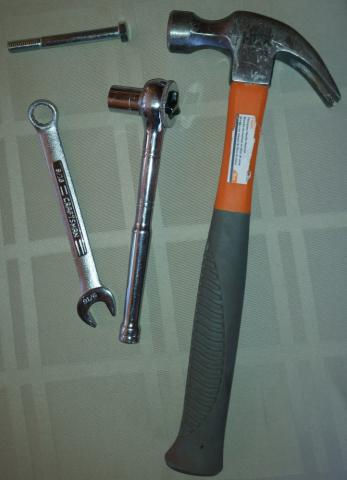Give Them the Right Tool
In a couple recent articles on the League of Game Makers Seth Jaffe has made the point that “the designer should strive to ensure that a player cannot make a choice or series of choices that will lead them to a state where they’re not really playing anymore.” I agree whole-heartedly with Seth and encourage you to read his articles (“YOU’RE PLAYING WRONG!” – GOOD PLAY EXPERIENCE AND THE DESIGNER’S RESPONSIBILITY and “HEY, LOSER!” KEEPING PLAYERS ENGAGED, EVEN WHEN THEY’RE BEHIND). I have tried to cover similar ground in my article, Eliminating Player Elimination. Just as Seth has published a follow-up article to make his point clear (there were some who misinterpreted his intent), I’ll also add a few words more from an angle closer to Seth’s perspective (though, it is from my perspective also which some have described as other-worldly).
First, an introduction to my approach is in order (because I am still introducing myself to you and some might mistake my analogies for ignorance). "In real life" I have been very successful with a practice I call “mentoring through metaphor.” So the following relies on your understanding the metaphor; this should work well for some and maybe not for others, but I think it will get the general idea across. Anyone who has had to work on a car is especially experienced for understanding, but even if the extent of your handiness begins and ends with assembling a bookcase that you bought at Ikea to show off your games, you should get the picture.
If you are helping someone drive a hex head bolt into a threaded object, don’t give them a hammer. They might make some progress, but the bolt will strip out and they’ll never be able to get the job done. What they need is a wrench. You might also encourage them to thread it by hand a little to get started. If they have forgotten the age-old adage “righty-tighty-lefty-loosey” they might start in the wrong direction. Hopefully, they can figure that out before the bolt falls out and they have to spend the next 20 minutes crawling around looking for it to start over. If they have started in the wrong direction and they figure that out before the bolt falls out (because of your early encouragement and your alerting them that they were going the wrong direction), they can reverse the direction and start making progress. Now if you give them a socket wrench, they can zip right along, and if they start in the wrong direction, they can get into trouble quickly. As long as the socket wrench you gave them can reverse direction, they will still be able ratchet that bolt down in short order. But if it doesn’t change directions, it will just slip away from them and they will bang their knuckles and curse you for giving them a broken wrench and for trying to help them in the first place. Note: If the person you are trying to help is fairly experienced, you might give them a power driver, but even so, you should only give an air wrench to someone who understands air pressure and torque. An air impact wrench is only for very special occasions and could set the bolt so tight that no one will get it back out.
You’ve gone through the trouble of making sure the bolt is the right size and thread count and that everything fits together just so. Why would you give your player the wrong tool to realize that? Don’t give your players a hammer when they need a wrench and if you give them a socket wrench, make sure it is reversible. If they still decide to use the wrench like a hammer (a la Red Green – 7:27) or insist on not reversing the direction of the socket wrench, well, what can you do? How much assistance do you feel you need to give the player? Have you given them the right tools to do the job?

